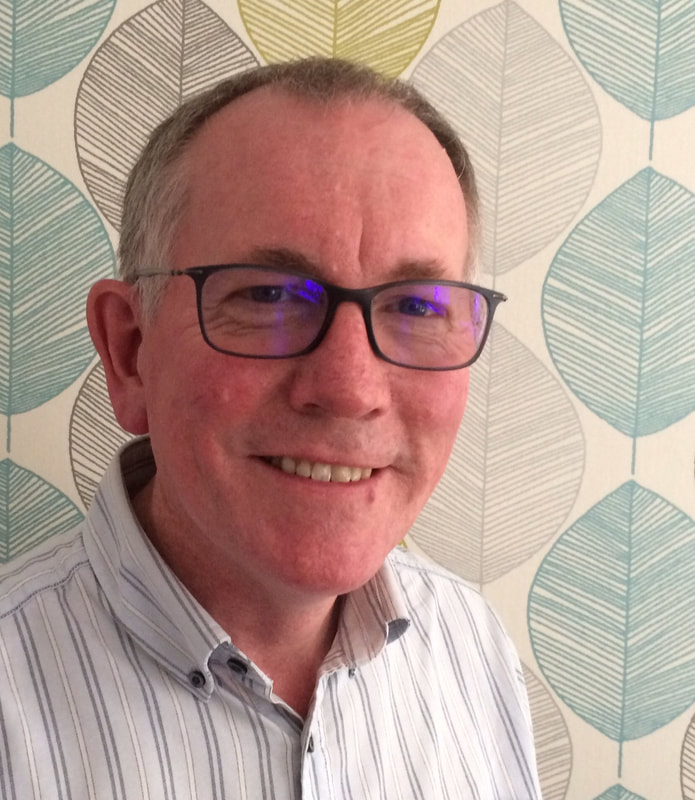Exploring the Passion and Resurrection of JesusIntroduction and Invitation Well, here’s the thing: there are so many voices around telling me who Jesus is. People in church today and through history - people of faith who I trust, others who I find rather challenging - voices in society around for whom Jesus is too distant or shrouded in academic debate for him to be significantly relevant - I could go on! The New Testament in the Bible offers both rich theological exploration and conclusions along with some deep personal testimony that are the most touching. That is all well and good, but who is Jesus to me? This is the most vital question. You are invited to hear some witnesses to Jesus, to reflect and prayerfully listen out for your own voice within. Jerusalem crowd (Matthew 21.6-11) I had heard about you Jesus. Some had heard you teach, others spoke of healings and miracles. The words of the prophets have been sharp and hopeful for us looking forward to freedom from oppression, but they had seemed too distant and remote. Then the rumours began - that you were coming to the city! And at such a time when we are celebrating Passover - God’s salvation. The crowds are shouting ‘Hosanna!’ - Save us! And that is our hope. I cannot see how it will happen, but I am enthusiastic to lay my coat in the road - my act of commitment. There are many voices crying out for salvation in our world today. What kind of Saviour are they seeking? How hopeful are you? Simon Peter - Footwashing (John 13.1-12) My first reaction is that I am not worthy for you, Jesus, to be washing my feet as that is a servant’s task. My sense of unworthiness persuades me that, yes, I do need you to wash me - but all of me! I recall being told how you were baptised by John and I realise that you understand my need. Be ready to open every aspect of your life to the Jesus you discover today. Disciples - Last Supper (Matthew 26.20-23) Jesus, you saying across the table that one of us would betray you has caused each of us to question our loyalty to you. None of us was at all certain of our trust. I cannot deny that this hurt a bit, yet I was more encouraged by the fact that, in sharing the broken bread and poured wine, you offered your whole self to us, regardless of our failings. Which has the greater influence in your life - your betrayals, or Jesus’ total offering of himself? Judas (Matthew 26.14-16) Yes, I was the one. And you knew full well, even before I had done the deed. I realised afterwards that, while I had sold you down the river for thirty pieces of silver, a real relationship with you would be beyond price. I couldn’t live in the shadow of what I had done. I wonder if I ever could have lived a life worthy of you? Jesus knows us, but does not judge - allowing each to shape our own destiny. Is Jesus in your life-plan? Disciples - Gethsemane (Matthew 26.36-45) We followed you to the city with such confidence, but at supper we became doubtful of ourselves. Everything seemed about to kick-off and things were unsettled. However, even as I tried to hide my fear in sleep, I heard your words of trust in your heavenly Father. I had my sword ready to defend you when the authorities came, but you healed the man I attacked and we, your friends, all ran away. Are there times when you are fearful of what following Jesus requires? Are there times when you feel the need to defend Jesus ? Peter (Matthew 26.31-35) Well, I could have died from shame. There’s me, the one you called ‘The Rock’, who had declared you to be the Messiah, who had pledged to follow you faithfully regardless and even die for you if need be. I had followed you after the arrest, but then what did I go and do? I insisted that I did not know you! Just to save my own skin. The moment the cock crowed - that was it for me ‘cos that is precisely what you said would happen. I know it was self-preservation on my part, but when I caught you looking at me across the courtyard I had a strong sense that you knew me better than I know myself and understood my human weakness. Reflect on being known and accepted by Jesus. Caiaphas and the Sanhedrin (Matthew 26.59-65) You are clearly an imposter, Jesus of Nazareth, because you are critical of so much of the religious establishment and customs that we uphold. You need to accept the authority we hold. Reflect on the relationship between Church tradition and customs and the personal authority of Jesus in your life. Pilate (Matthew 27.11-26) I will admit that my view of you, Jesus of Nazareth, is more down to my own situation. I am supposed to be a man of power, authority and influence, yet the Jewish leaders have me over a barrel and my own wife has had some troubling dream and wants me to have nothing to do with you. I suspect she feels dealing with you will damage my career prospects. You are an irritating man (who will not admit to guilt and make my life easier) and I’m afraid you are an innocent pawn in this whole scenario - a dispensable life. To what extent does following Jesus impact your career and way of life? Is Jesus dispensable to you? The Soldiers (John 19.1-2) This man, Jesus, is another troublemaker, deserving only of disdain and contempt. He is a person of no real consequence to us. How do you feel about those in our own time who hold this view of Jesus? Simon of Cyrene (Matthew 27.31-33) I have travelled a long way to be here to celebrate Passover and offer my sacrifice in the Temple and I find myself forced to carry the cross of this man, Jesus. As I struggle under the weight of the wood it begins to feel like my own past, yet it is this Jesus who will be nailed to it. I sense that God’s forgiveness is here. Do you continue to carry your sinfulness as a burden, or can you see that it is with Jesus nailed to the cross? Centurion (Matthew 27.46, Luke 23.46, 54) In terms of the gruesome mechanics yours is a normal execution and I leave my men to handle all that. However, you carry a particular reputation and the Governor is insisting that an inscription be nailed to your cross ‘The King of the Jews’. I really have no view on what this means, but I am struck by your words with God. Is he really so near that in your utter despair you challenge his desertion of you. Then, when the end comes, you commit your spirit to him. I see in you a despairing human, but also a trusting son and can only conclude that you are a Son of God. A God who is with you in the depths and inspires your commitment when the end is in sight - is this who you know through Jesus? Mary and John (John 19..25-27) We are here because we love you, Jesus, son and friend. This is why, even though we recognise that you saw this death as your destiny, it so tragic. But we also feel that in all this your love is demonstrated in a way much more than we could ever show. You have given us each other, but you have also given totally of yourself. Mary Magdalene (John 20.11-16) I cannot see in the darkness, but the voice speaks my name and I know it is you, Jesus, alive! It is you who knows me best. How personal do you feel your relationship with Jesus to be? Disciples on the Emmaus Road (Luke 24. 13-35) We break bread every sabbath, but somehow at the supper table we shared with you on our journey we were taken back to that Passover meal when Jesus offered his life to each of us. That was the moment of recognition for us, as nail-scarred hands broke bread and offered it to us. Where do you recognise Jesus in events and actions around you today? Thomas (John 20.24-29) I wouldn’t say that I doubted that Jesus had risen from the dead, but I am careful and like to get factual evidence sorted out where I can. And there Jesus was, showing me his nail scars and wounds. What evidence do you seek that enables you to believe Jesus is risen and for you to say “My Lord and my God”.
1 Comment
I have recently come across the work of artist Sandra Carvajal (www.sanstarling.com) and my attention was caught by a couple of triptychs, with videos demonstrating how the three elements in each are interchangeable. This enables the viewer to move the elements around to create a new painting and decide which configuration they find the most pleasing. Perhaps because the images seem to echo leaves and stones respectively, the words of Charles Wesley's hymn sprang to mind. Finish then, Thy new creation; pure and spotless let us be; let us see Thy great salvation perfectly restored in Thee. (Charles Wesley) A reflective exercise could be for a viewer to reconfigure a triptych to their satisfaction, while also pondering the changes to personal life/society/creation that might be most pleasing to God. I am challenged to create a similar triptych (I discover this is no easy task!) with an image more obviously related to creation. Watch this space! Well, here it is - my effort at an interchangeable triptych! Three of the arrangements create different unified images, while the fourth disjoints the image. The question to you, the viewer, is whether you have a preference? I fully expect there to be some who do choose the disjointed image as the one that chimes with them, simply because we don't all like things to be neat and tidy. Your comments on this exercise would be much appreciated.
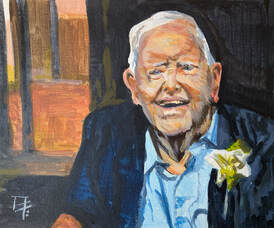 In recent days the enflamed conflict between Israel and its neighbours has been a great cause of concern and a real sense of frustration that there is nothing that one can personally do in response (apart from financial support to aid agencies), and that this is a situation that has existed for decades. It is easy to lose hope. A while ago I read a memoir by the former US President Jimmy Carter (1977-81) in which he briefly related the lead up to the Camp David Accord signed by himself, Egyptian President Anwar Sadat, and Israeli Prime Minister Menachem Begin in September 1978. It was a personal achievement, after much effort to get the two leaders together. I do wonder how Jimmy Carter must feel as the current situation makes his efforts pointless. As a seasoned politician, I am sure Jimmy Carter has weathered many other significant disappointments in his career and life, but there seems to be much more, as this was a mission for a whole region of the world torn apart by animosity and violence while personal political ambition did not seem to feature. Jimmy Carter is known as a man of strong Christian faith and here one finds the motivation for his political life and what he was seeking between Israel and its neighbours. It is also the source of hope which, I am sure, takes Jimmy Carter beyond his disappointments to something more positive that lies ahead. Reflecting on these things, I found myself moved to paint a portrait of Jimmy Carter and discover something more of the hope that is found in Jesus Christ. The image is of him celebrating his 75th wedding anniversary to Rosalyn at the age of 97 (he is currently 99 years old) and I trust reflects his attitude of hope and expectation in the future. It is something we all need to discover and grasp. In the face of much rather negative and depressing news of events it seems vitally important and necessary to spend some time reflecting on those things that bring joy into our lives. A series of paintings has been my way of distracting from the negative and I invite you to identify those things that delight you and find some way in which these might be shared with others.
Click on a thumbnail for the full image A full collection of images can be viewed here
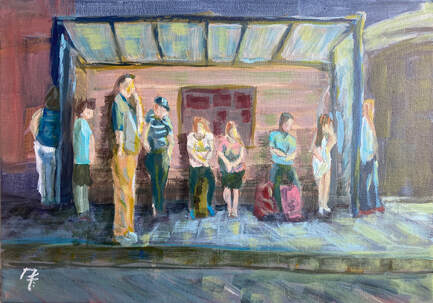 "Waiting" What for? How long? Where are you going? Who with? What baggage are you carrying? Who are you talking with? What is your mood? All these are questions that might be asked of this painting, as they might also be of ourselves in any moment. The Isle of Sheppey lies in the Thames estuary (outside the flood barrier) and is low-lying. It is a place of vulnerability, threatened by high tides and shifting coast. The image is of some wooden 'shack' properties (actually holiday lets) situated right on the edge.
The edge is representative of several aspects of this situation - the beach/land divide marked out by a fence - the beach/sea relationship punctuated by the wooden groynes that seek to maintain some stability - the horizon marking out the sea/sky boundary along with the hint of what it is that lies beyond - the dawn light which marks the transition between night/day offering a future hope, while the 'red sky in the morning' gives a warning of possible threat to come. For Sheppey residents the sharpest edge that they live on is likely to do with climate change with rising sea levels, but the new day always offers hope. The red sky may offer a warning, but this can be a spur to action. For those of Christian faith the brightening horizon and all that is hopeful beyond it are a reminder of what it is that God promises. The sky may be seen as a call to a change of heart, so that God's promises, seen in the life, death and resurrection of Jesus, might be real for us within the present time. The sharpest edge here is that between this world and life and the next, but this is not an edge to fear because God is on both sides!
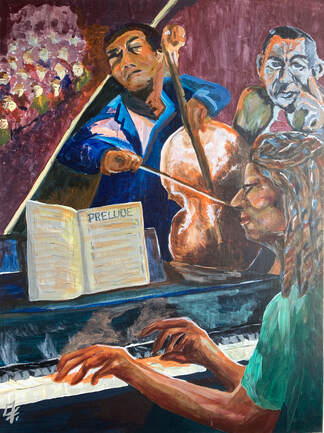 The musical creative process centres on the performers, but begins with the composer and continues within the audience. This image based on Sheku and Isata Kanneh-Mason with Rachmaninov. Each creative process is only a prelude to what happens next in many different settings and ways. In the case of this musical performance, I was inspired to undertake a painting of the passion of the Kanneh-Masons, Who knows what other outcomes came about within the audience?! 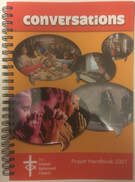 I was invited to contribute, under the theme of 'Conversations', to this annual publication with material for Holy Week and Easter Day. These relate to the Biblical story which is referenced, so these can be read alongside. In addition there are two further contributions that have been my own choice - around the themes of dementia and creativity. All the material can be found here |
Archives
March 2024
|

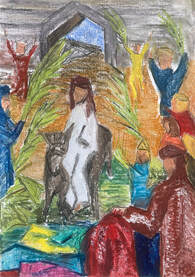
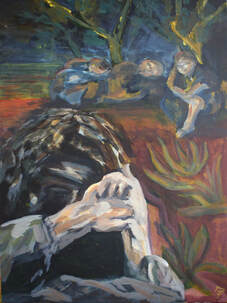
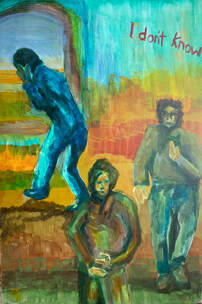
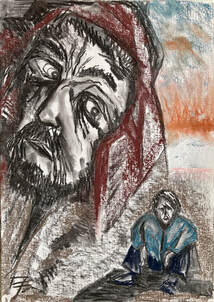
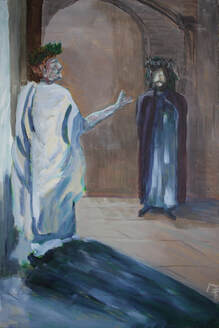
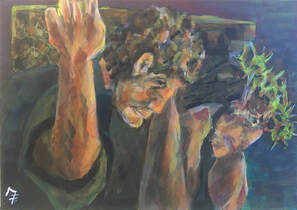
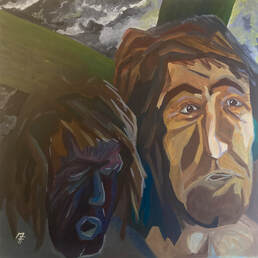
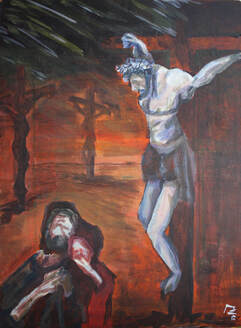
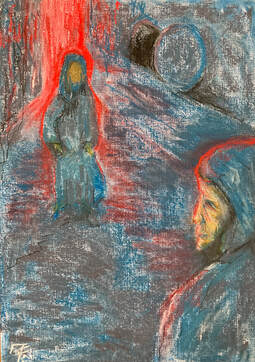
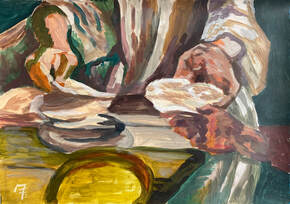
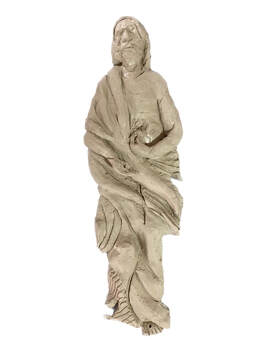
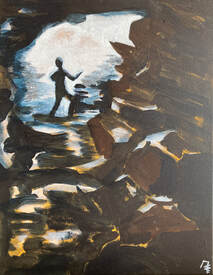
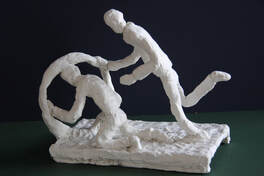
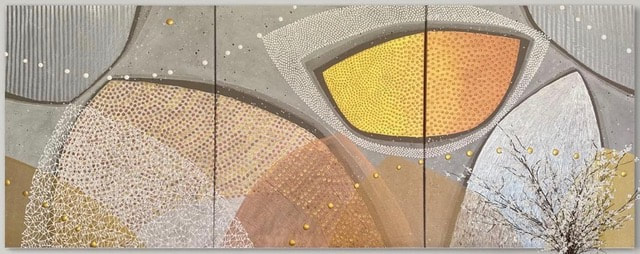
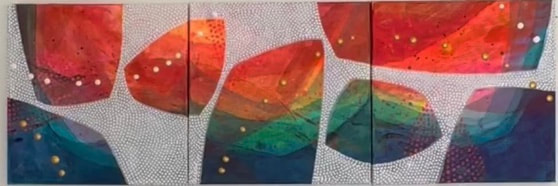
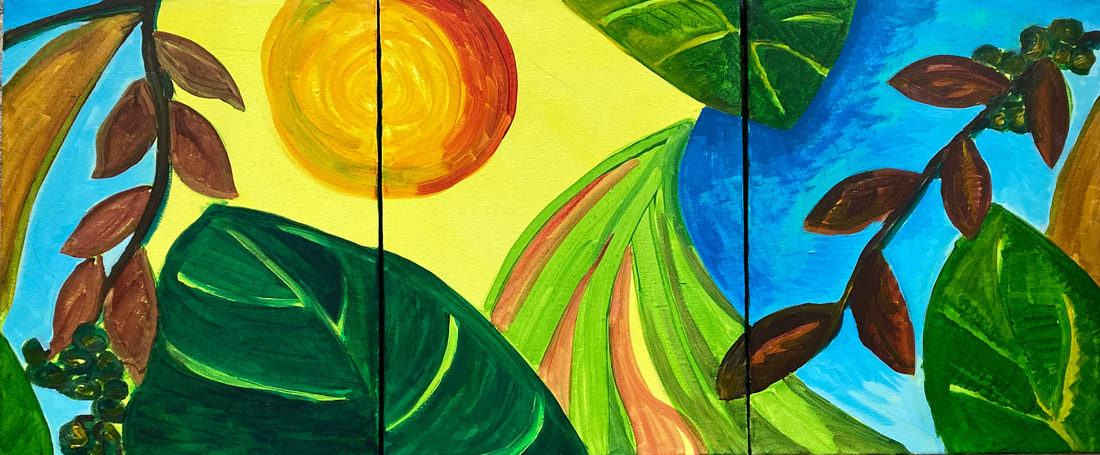
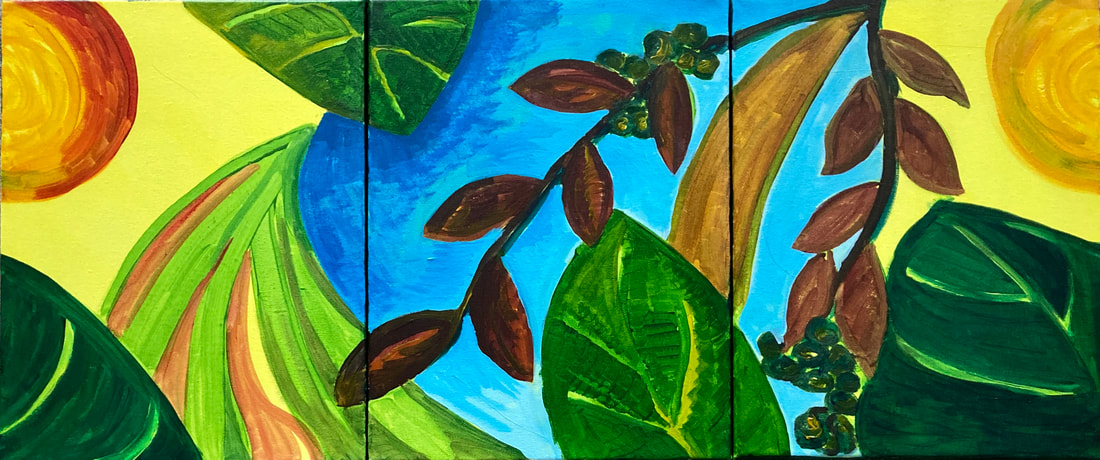
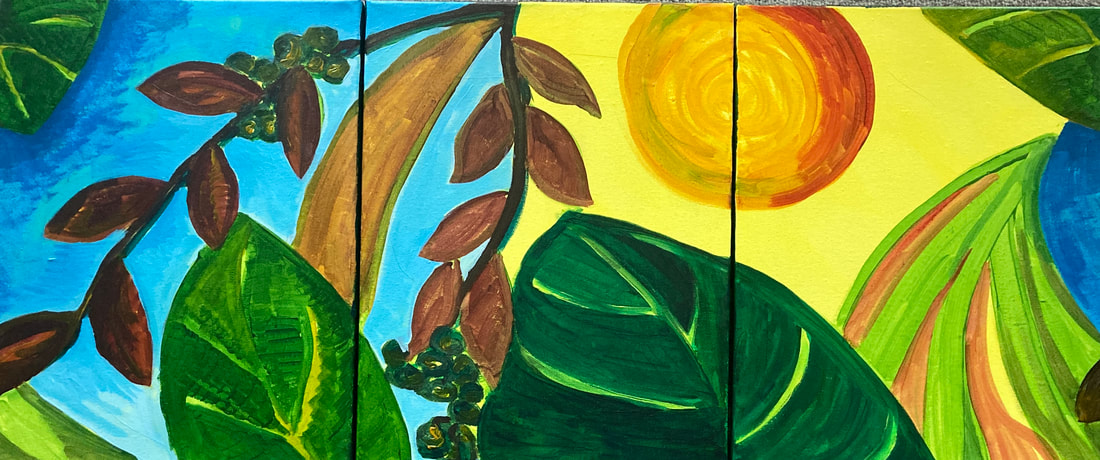
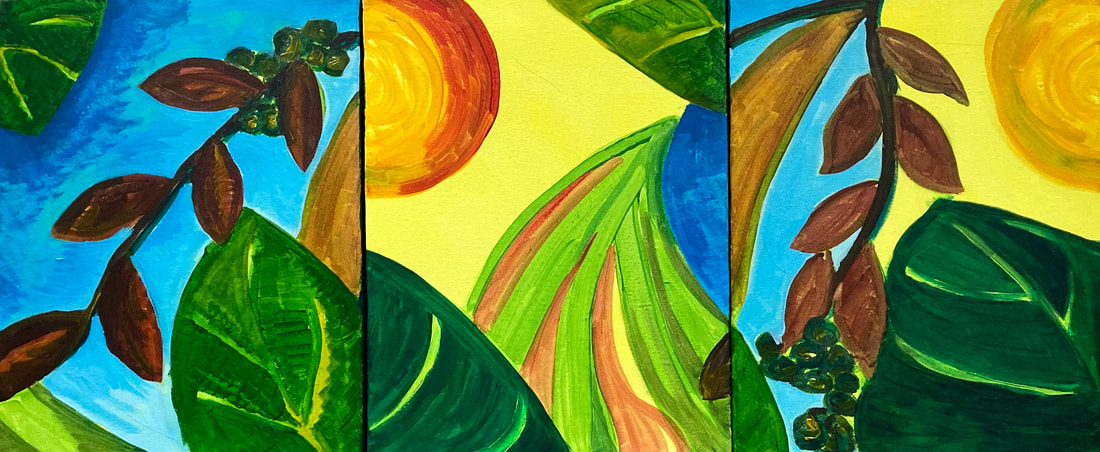

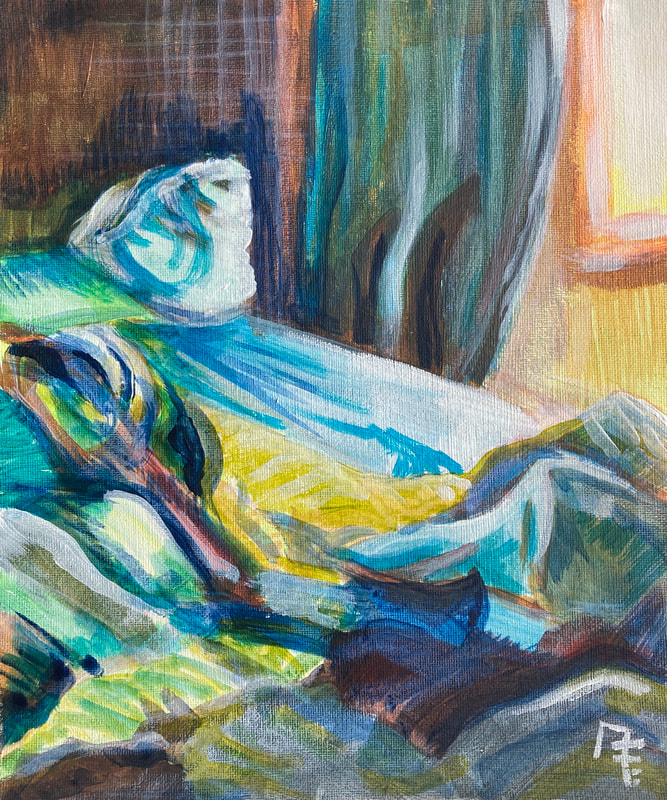
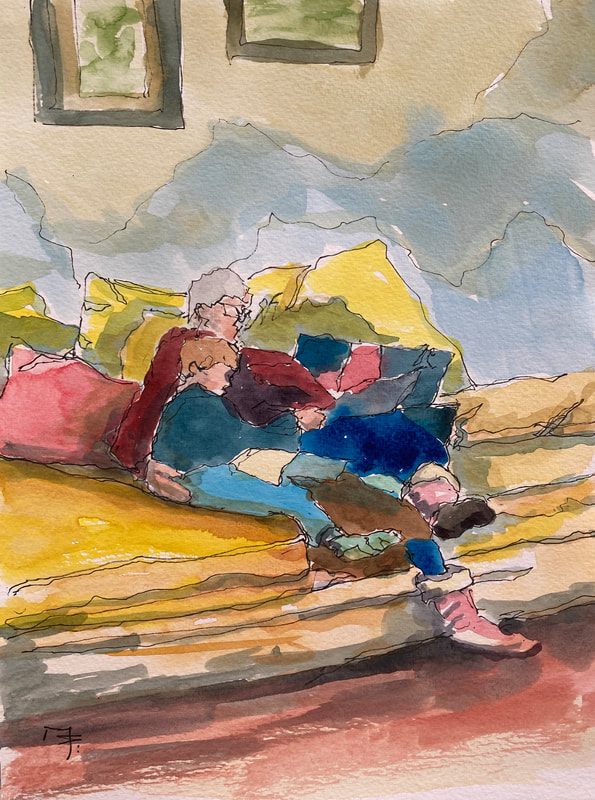
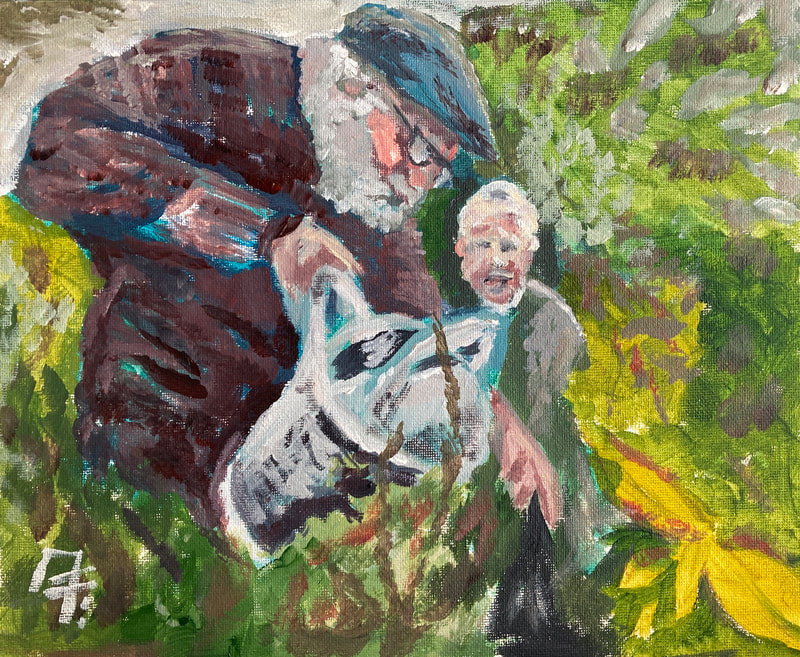
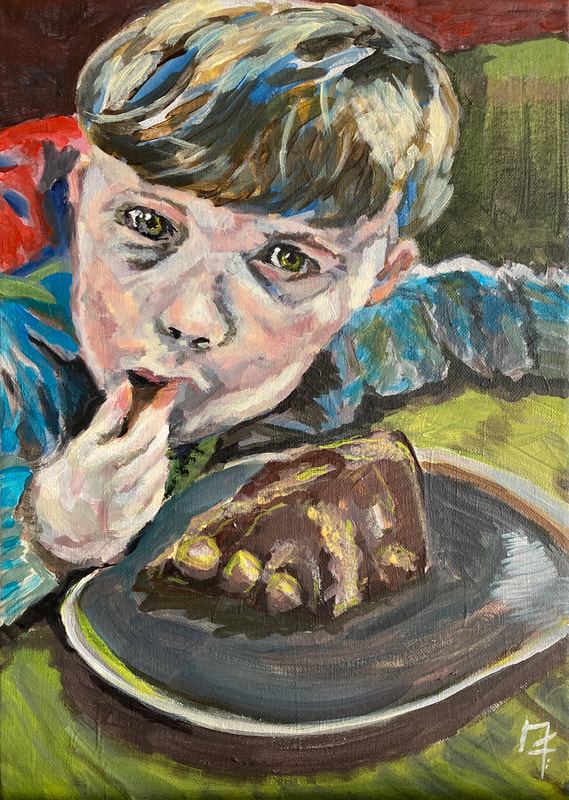
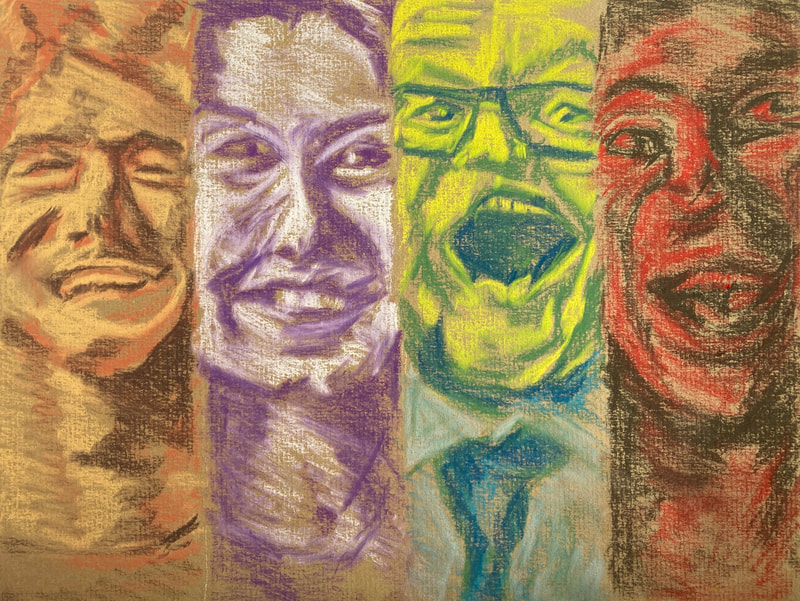
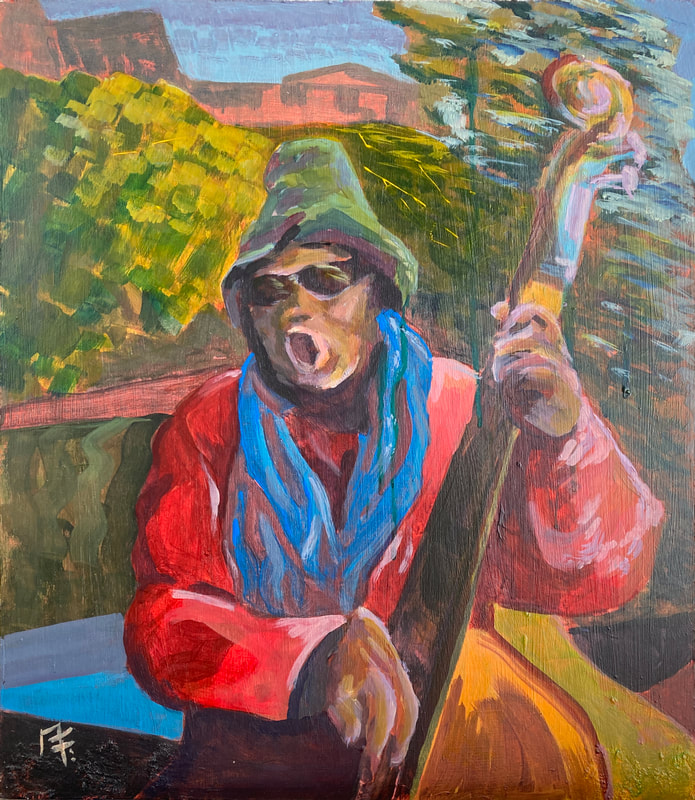
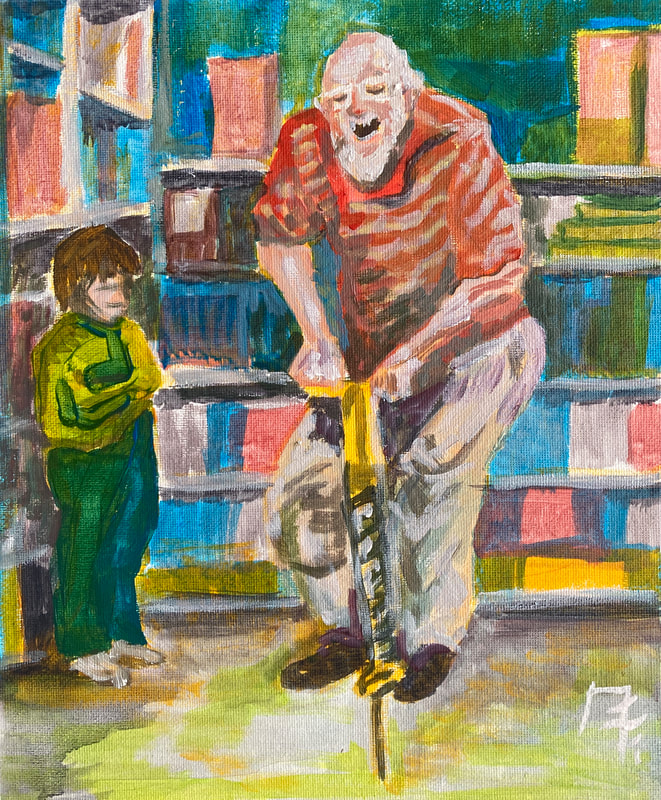

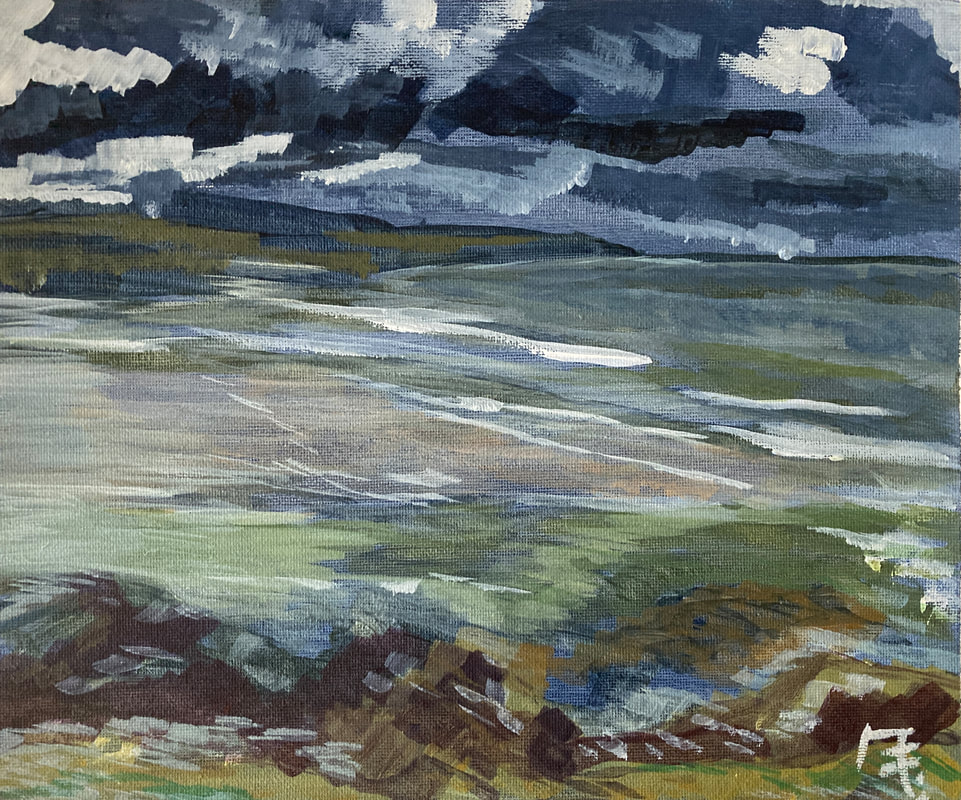
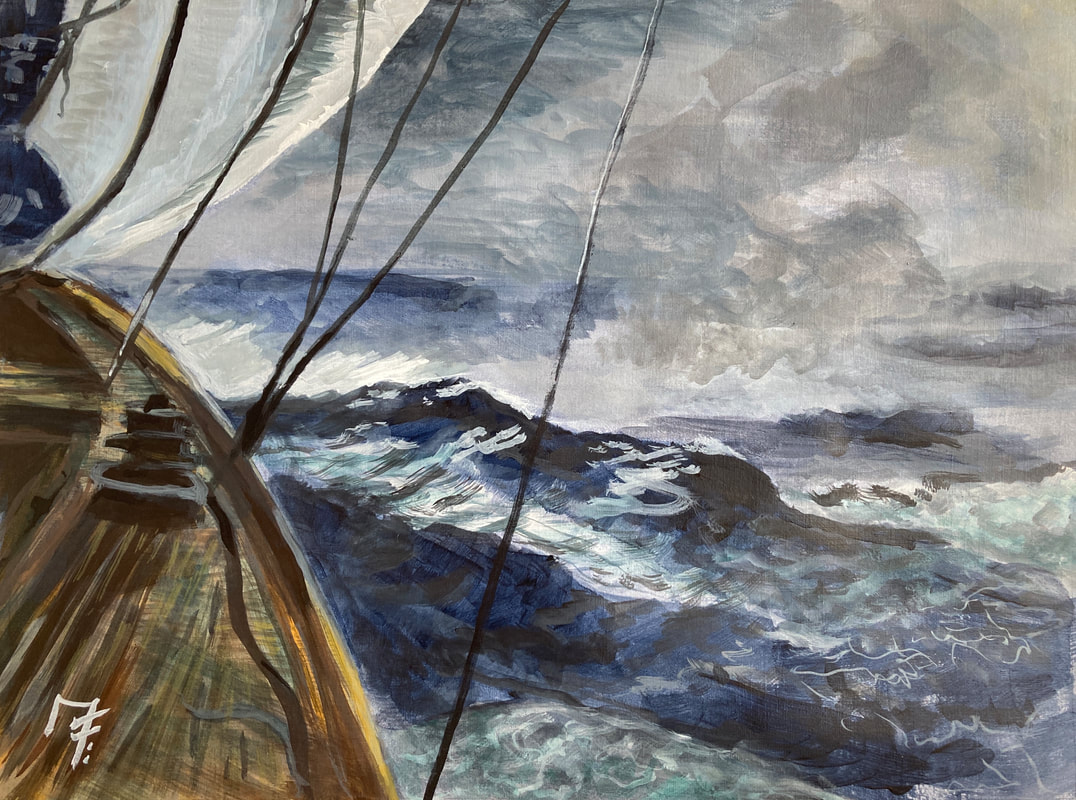
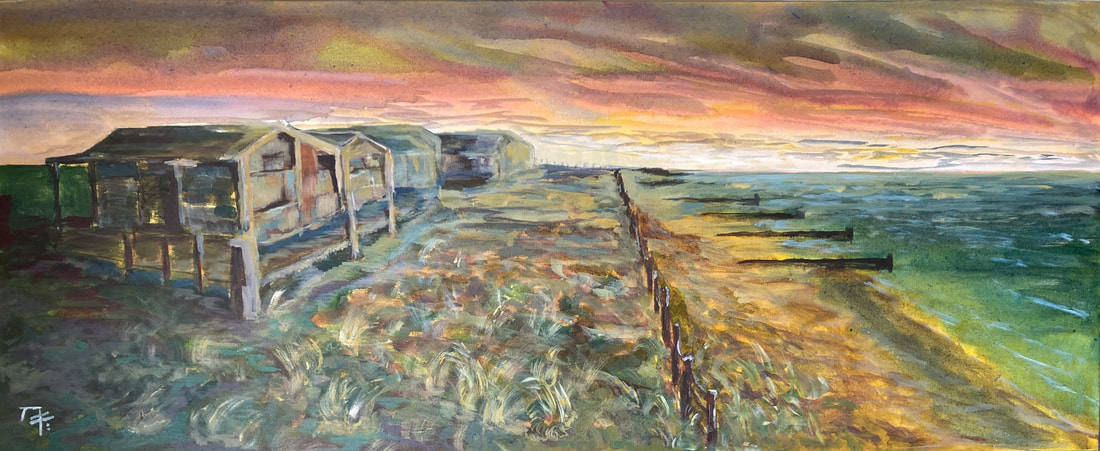
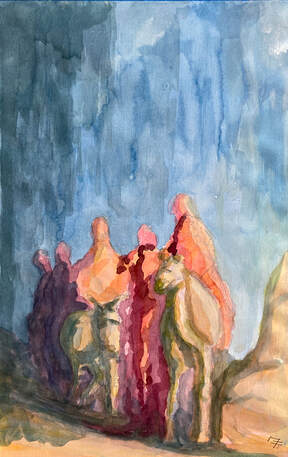
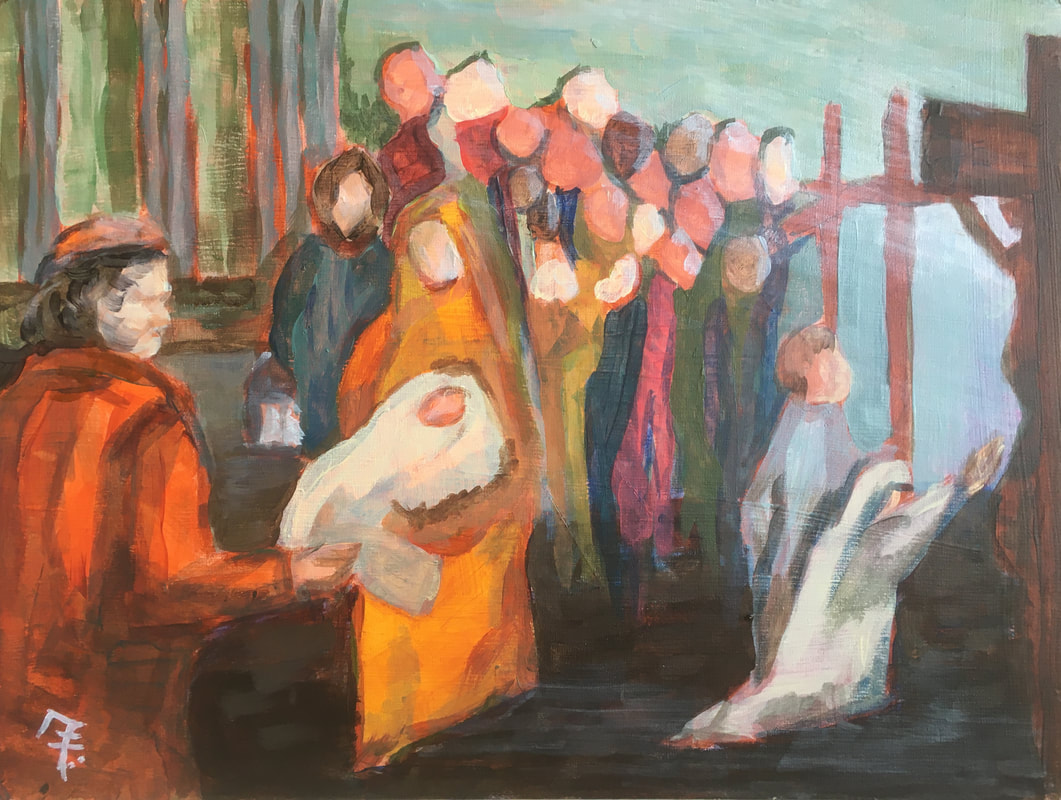
 RSS Feed
RSS Feed
